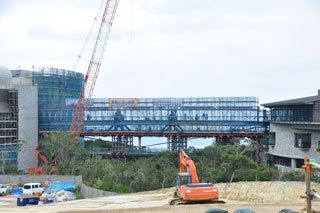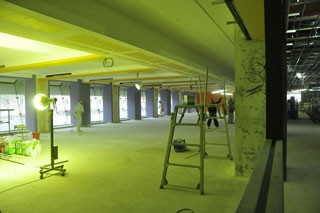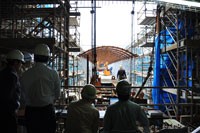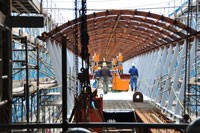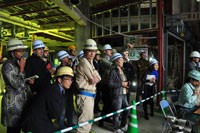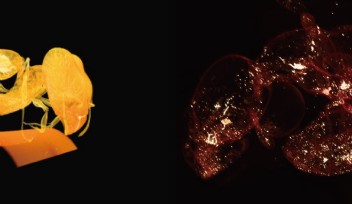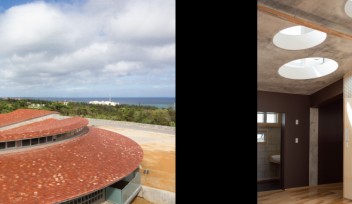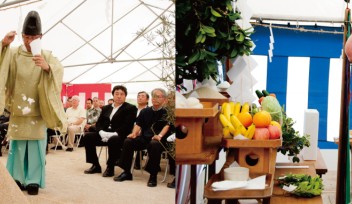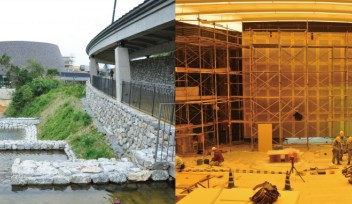A Breathtaking Skywalk
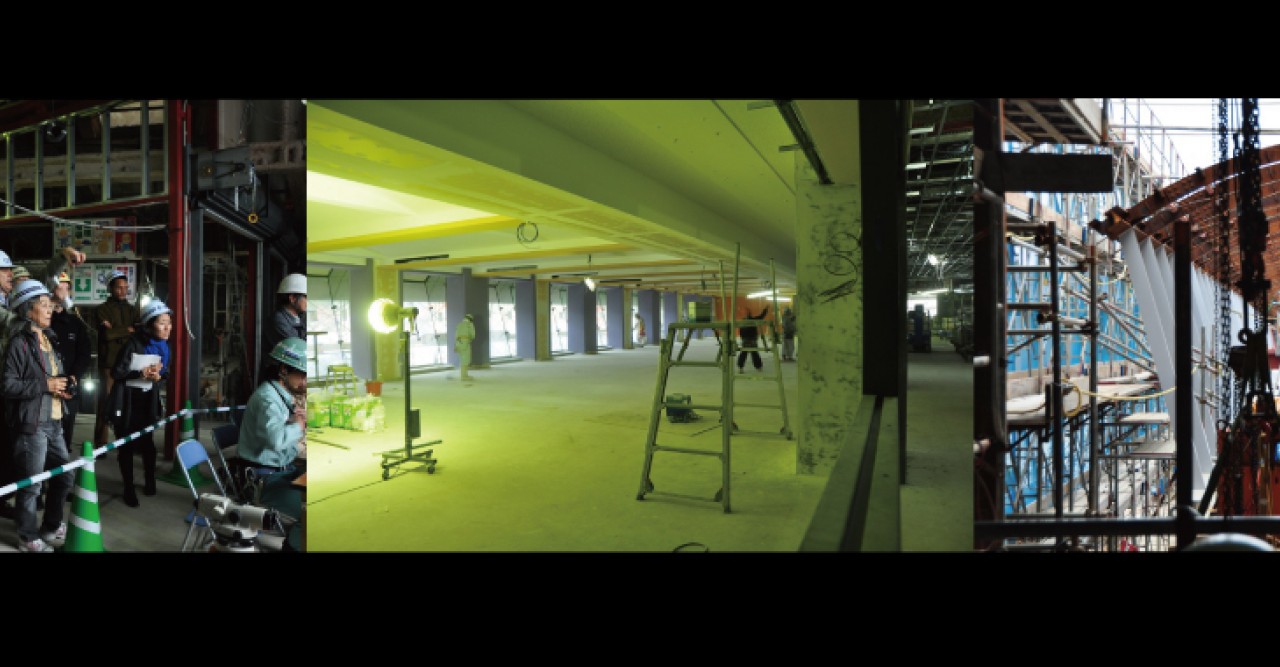
Walking across the new skywalk between the Center Building and Laboratory 2 will be a unique experience. Surrounded by the two buildings at either end, a brilliant view of the East China Sea and the rich valley flora below, the 63-meter skywalk links the Center Building and Lab 2 with the natural habitat as well as adding an undeniable touch of architectural aesthetics.
The skywalk’s uniqueness is derived from the fact that unlike most bridges it is an inverted king post truss bridge. A king post truss has two angled cables attached to a central vertical support. The inverted bridge’s central post is above the valley between the two buildings. The suspended central post and cable design means that the bridge does not require support columns that would otherwise damage the natural landscape or vegetation of the ravine underneath the skywalk. Denise Brooke, a researcher at OIST says “As an ecologist, I am very concerned with the preservation of the riparian area between the buildings. By investing in the skywalk, OIST is protecting important wildlife habitat, especially for endangered salamanders. But I think that it is also wonderful that OIST has put so much effort into making the skywalk a beautiful addition to the natural landscape.”
On the 20th of January 2012, the skywalk was "jacked down" onto its two steel support cables, meaning that the cables visible under the skywalk now carry the entire weight of the bridge, about 550t. Lab 2 was a beehive of activity as construction workers, engineers and architects monitored on computers, each step of the jacking process. The four jacks that temporarily supported the bridge while it was being constructed were eased in stages letting the bridge lower onto metal brackets at the tip of the center post. The tension in the cables was tested each time the weight of the bridge was shifted from the jacks onto the metal brackets.
Several provisions have been made for the skywalk to ensure that it will remain stable during typhoons, extreme temperature changes or earthquakes. For example; the joint of the bridge to Lab 2 is permanently fixed whilst the joint at the Center building has been made moveable to allow it to slightly slide back and forth.
Masaki Takahashi, the manager from Nishimatsu Construction, Kyushu branch, who oversees the construction says, “I am happy that the bridge is close to completion without injuries. Nevertheless the job is not yet done. We are in charge of Lab 2 and have more to tackle.” It has been 1 year and 4 months since the company started constructing Lab 2. The building is scheduled to be completed this March and researchers can expect to move into their new spaces in June.
Lab 2 will house physicists, mathematicians, computational researchers, chemists and biologists, further fostering OIST’s interdisciplinary spirit. Similar to Lab 1, Lab 2 will have offices for faculty members from varying scientific fields sited side by side. Features of Lab 2 will be visiting faculty offices, meeting rooms, wet and dry labs and numerous other spaces to be occupied by researchers and students alike.
For press enquiries, please contact media@oist.jp






